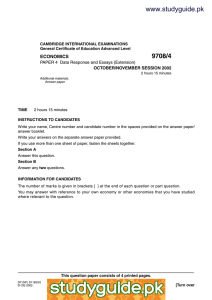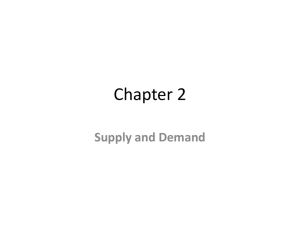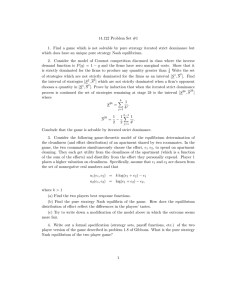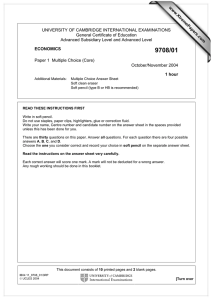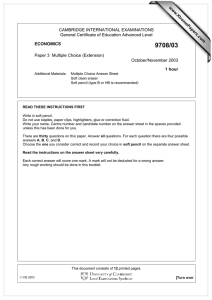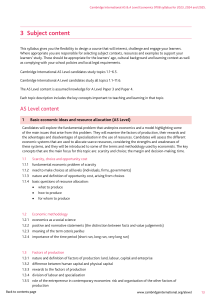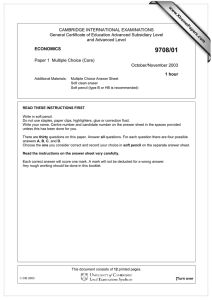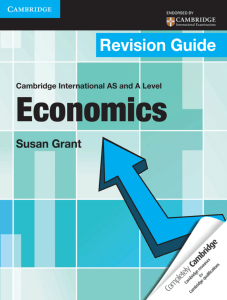9708/4 ECONOMICS PAPER 4 Data Response and Essays (Extension) www.XtremePapers.com
advertisement
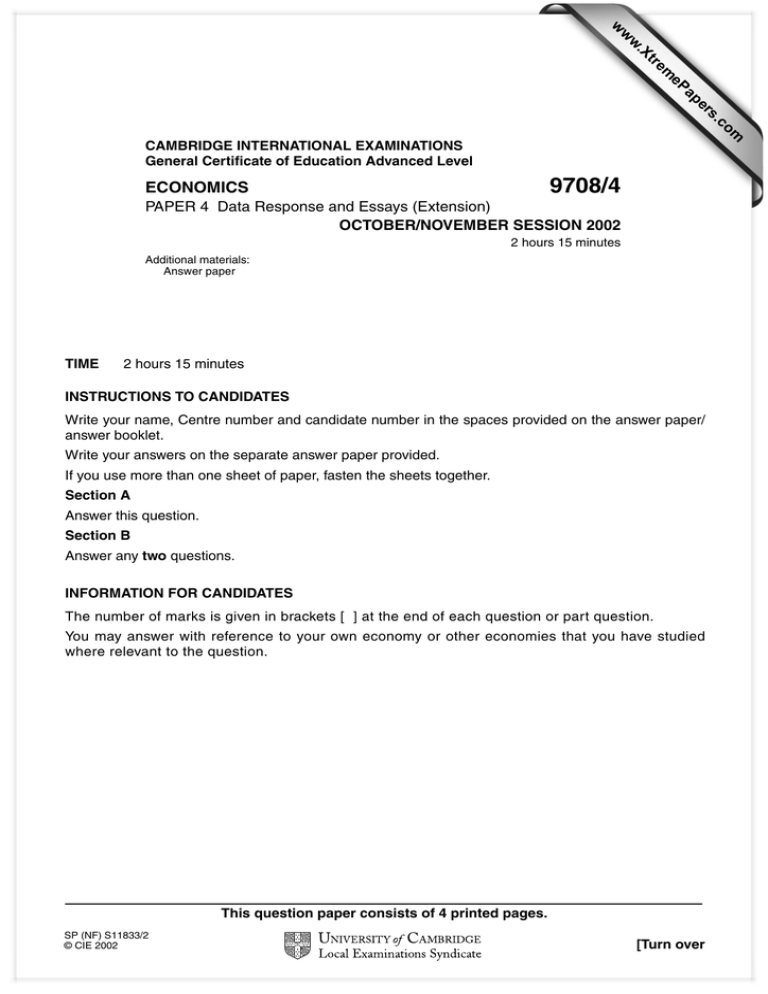
w w ap eP m e tr .X w om .c s er CAMBRIDGE INTERNATIONAL EXAMINATIONS General Certificate of Education Advanced Level 9708/4 ECONOMICS PAPER 4 Data Response and Essays (Extension) OCTOBER/NOVEMBER SESSION 2002 2 hours 15 minutes Additional materials: Answer paper TIME 2 hours 15 minutes INSTRUCTIONS TO CANDIDATES Write your name, Centre number and candidate number in the spaces provided on the answer paper/ answer booklet. Write your answers on the separate answer paper provided. If you use more than one sheet of paper, fasten the sheets together. Section A Answer this question. Section B Answer any two questions. INFORMATION FOR CANDIDATES The number of marks is given in brackets [ ] at the end of each question or part question. You may answer with reference to your own economy or other economies that you have studied where relevant to the question. This question paper consists of 4 printed pages. SP (NF) S11833/2 © CIE 2002 [Turn over Please note Question 1 has been removed from this question paper for copyright reasons. 3 Section B Answer any two questions. 2 ‘In a free competitive market, a shortage causes price to rise, a surplus causes price to fall. In some markets this does not happen because a minimum price is fixed by producers.’ (a) With the aid of diagrams and examples, explain why prices rise when there are shortages and fall when there are surpluses. [10] (b) Discuss the factors that a group of companies might consider when deciding to fix a minimum price in a market. [15] 3 (a) Explain what is meant by productive and allocative efficiency. [10] (b) ‘A firm should be encouraged to maximise profits because this makes it efficient.’ Discuss whether this argument is true for a firm operating in an imperfect market. [15] 4 (a) Assume there is an open economy with a government sector. Explain the conditions for equilibrium in the circular flow in such an economy. [10] (b) Discuss how an increase in injections may affect the equilibrium level of national income. [15] 5 A government’s macroeconomic aims are low inflation, low unemployment, balance of payments equilibrium and economic growth. Individuals see their standard of living as more affected by a well-paid job, low crime rates and a pleasant environment. Discuss how far the government can meet the desires of individuals by satisfying its macroeconomic aims. [25] 6 The aim of most developing countries is to become developed. If this aim is achieved, will it always bring benefit to the population of the developing country? [25] 7 (a) Explain with the aid of examples how price discrimination can operate. [12] (b) Discuss whether price discrimination can ever be of benefit to consumers. [13] 9708/4/O/N/02
